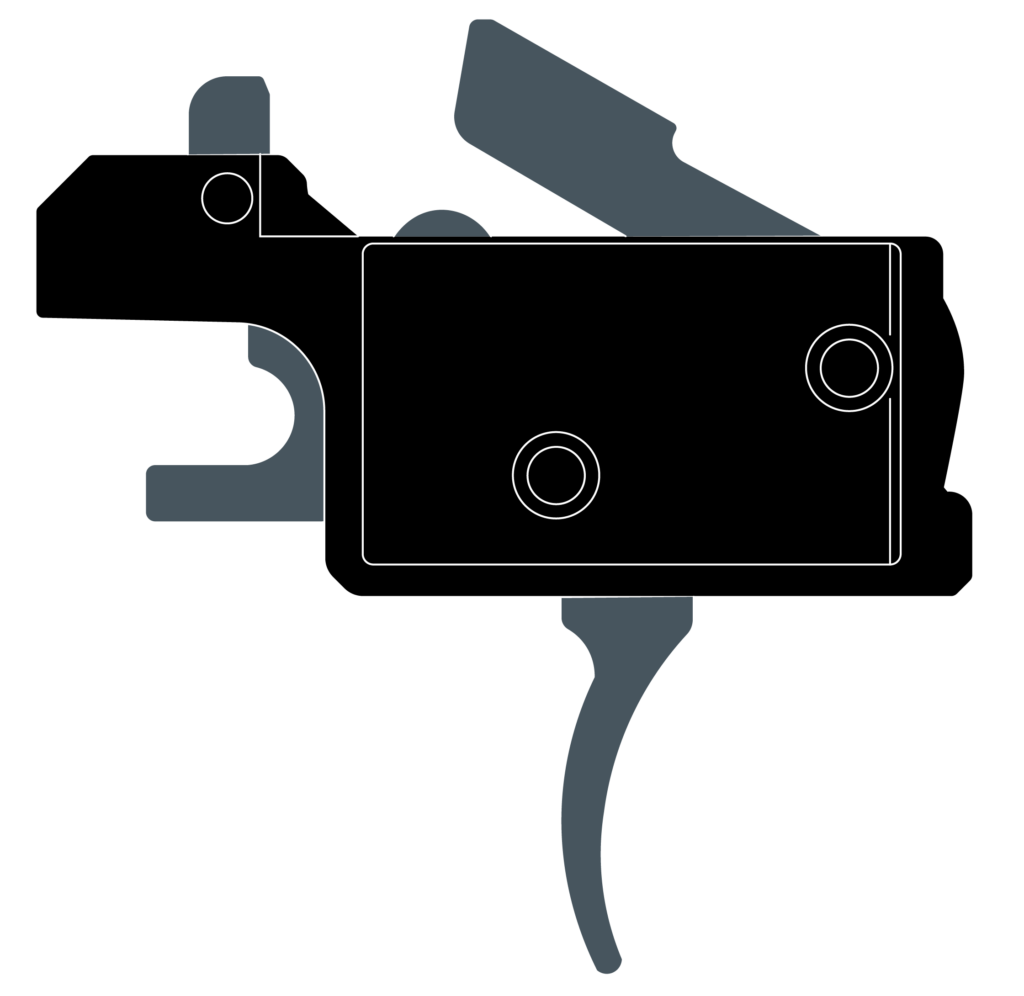Many firearms today are easy to customize and reconfigure with a wide range of original and aftermarket parts and accessories made by hundreds of companies. Gun owners can replace their firearms’ barrels, stocks, frames, handguards, and more to adjust their weapons’ performance, handling characteristics, or aesthetics. But some of these modifications, such as bump stocks and certain drop-in triggers — including binary triggers and forced-reset triggers — increase a weapon’s rate of fire to mimic a fully automatic machine gun’s.
These modifications pose a danger to the public because they could lead to significantly more victims in mass shootings, yet they serve no legitimate purpose for, say, hunting or home defense.
binary trigger basics
Binary triggers are drop-in replacement triggers for semi-automatic weapons that allow shooters to fire one shot when they pull the trigger and another when they release the trigger. A binary trigger can effectively double a gun’s rate of fire, and a shooter can still “bump fire” with a binary trigger — as they would with a bump stock — to approach the blistering speeds of a fully automatic machine gun.

Franklin Armory, an AR-15 manufacturer in California and Nevada, was the first company to develop and debut binary triggers in 2015. Today, the company offers binary triggers for a number of semi-automatic firearms, including AR- and AK-style weapons, as well as complete weapons that come with binary triggers already installed.
In 2020, Franklin Armory also purchased Bushmaster, the brand notorious for producing the AR-15 used by the Newtown mass shooter, and it now sells AR-15s with binary triggers through that brand. The company also used the 2022 SHOT Show to unveil the first binary trigger conversion kit for Glock 17 pistols, which could provide an alternative to “Glock switches,” the devices made by various third parties to increase a Glock handgun’s rate of fire.
In March 2023, Big Daddy Unlimited, a Gainesville, Florida, firearms retailer, unveiled its own “G-Flex” binary triggers for Glock pistols that, unlike Franklin Armory’s design, drop into a wide range of Gen3, Gen4, and Gen5 models without requiring a proprietary slide. Big Daddy Unlimited also claims that the G-Flex binary triggers — priced at $230 — are ATF compliant but has not provided any determination letters as proof, and the ATF has not offered any public comments on this development.
Another company operating in this space is FosTech Outdoors, which offers “Echo” binary triggers for AR- and AK-style weapons.
Why are binary triggers legal? The federal definition of “machine gun” “means any weapon which shoots, is designed to shoot, or can be readily restored to shoot, automatically more than one shot, without manual reloading, by a single function of the trigger.” The ATF currently holds that because binary triggers require two separate movements — a pull and a release — they are not machine guns. The ATF interprets “single function” to mean a single movement, though all triggers, by their very nature, are pulled and released.
Using an AR-15 equipped with a binary trigger, a shooter can theoretically pull the trigger in “binary” mode to fire a round and, prior to firing again by releasing the trigger, set the safety selector to “semi-auto” or “safe” mode to cancel the release shot. But with Big Daddy Unlimited’s G-Flex binary triggers for Glocks, however, there is no safety to interrupt the firing cycle, meaning a shooter will automatically fire two shots per trigger pull as long as the gun still has ammunition.
Currently, binary triggers have been prohibited in several states, including California, Florida, Illinois, and others, mostly because their laws banning bump stocks were written to prohibit any devices that increase a semi-automatic weapon’s rate of fire.
forced-reset triggers
For even faster rates of fire, shooters can turn to forced-reset triggers, or FRTs. With an FRT, the trigger automatically resets, or returns forward, after the shooter pulls the trigger. Again, like a bump stock or binary trigger, this modification can allow shooters to fire an entire magazine’s worth of ammunition in seconds.

Rare Breed Triggers was the first company that attempted to market and sell FRTs that drop into AR-platform weapons just like binary triggers. But shortly after Rare Breed launched the FRT, the ATF ordered the company to stop producing and selling the devices in a cease-and-desist letter that correctly identified FRTs as “machine guns” by federal law because they allow people to fire more than one shot per trigger pull. The company then sued the ATF in an attempt to continue selling FRTs, but the case was dismissed.
On March 22, 2022, the ATF published an open letter to all licensed gun makers and sellers announcing that “some” FRTs are considered “machine guns” by federal law but declined to name specific companies or models. In that same letter, the ATF also legitimized binary triggers and reiterated that they are legal on the federal level.
More recently, on January 17, 2023, the Department of Justice sued Rare Breed Triggers, alleging that the company had defied the ATF’s orders and continued to sell thousands of FRTs to customers looking to turn their AR-15s into unregistered machine guns. In September 2023, a federal judge issued an injunction blocking the company from selling its triggers.